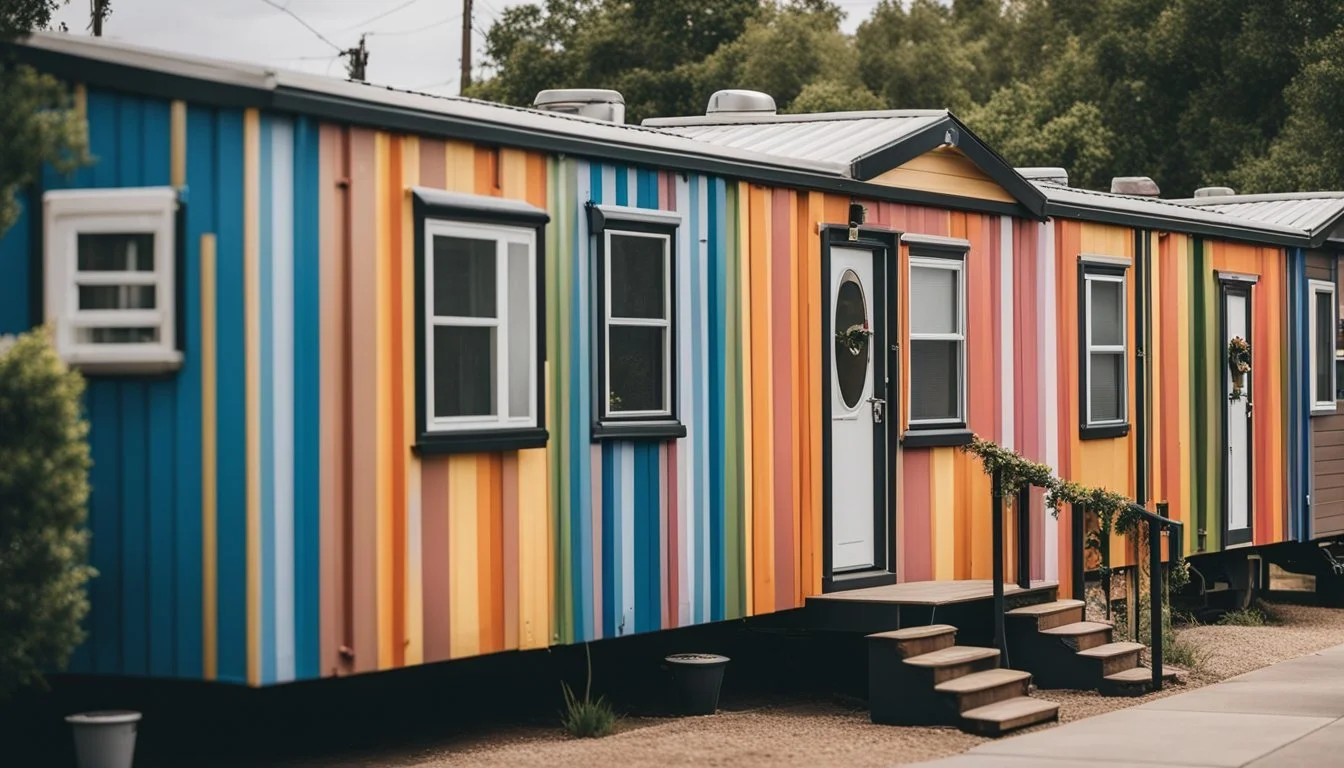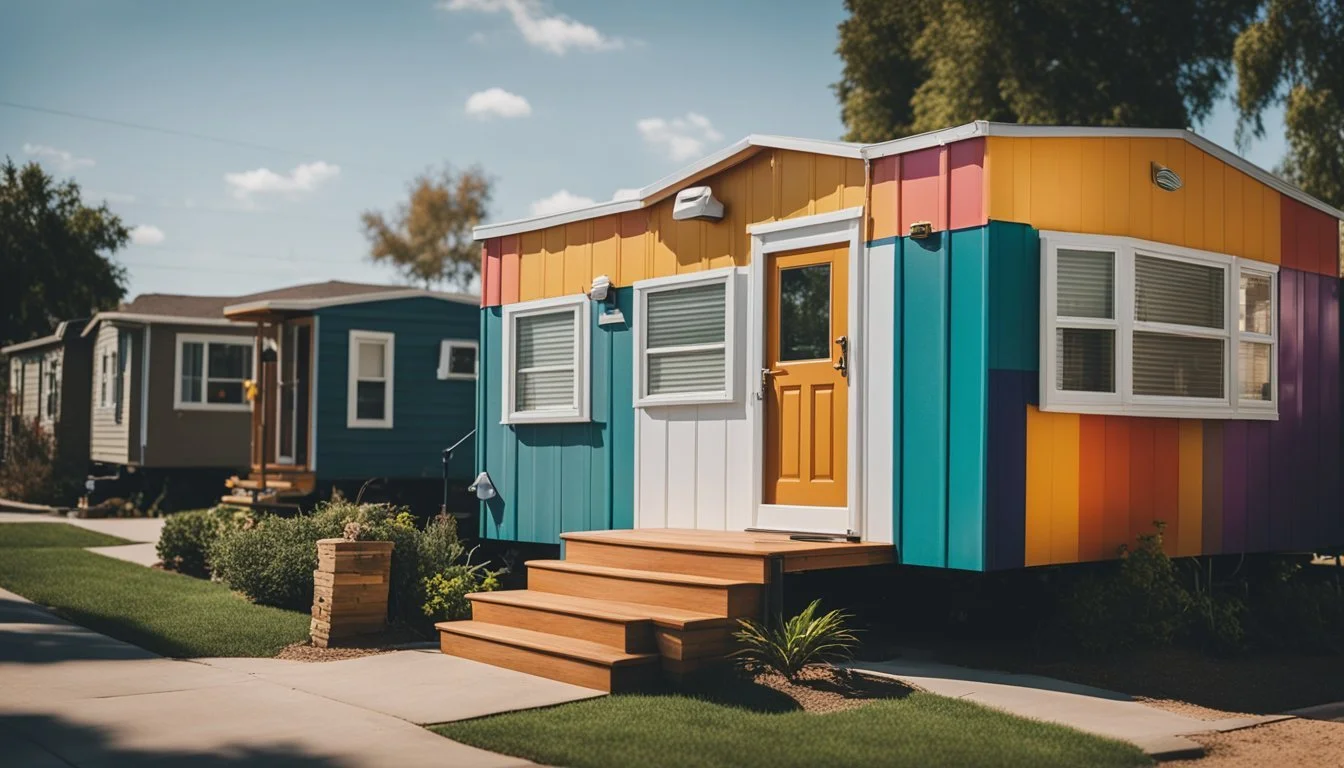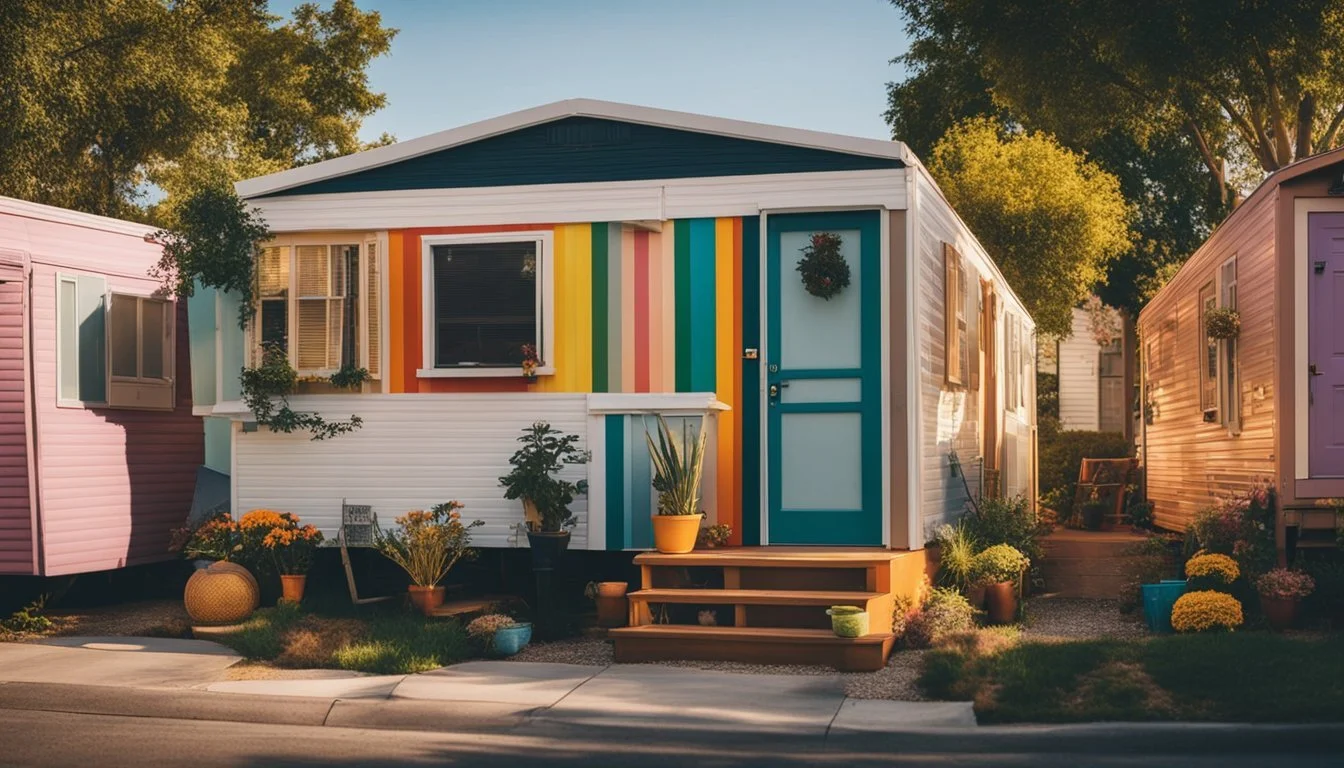The Role of Mobile Homes in LGBTQ+ Literature
Exploring Representation and Identity
Within LGBTQ+ literature, mobile homes often emerge as significant symbols of both struggle and resilience. The representation of mobile homes reflects the broader challenges faced by the LGBTQ+ community, where themes of displacement, identity exploration, and non-traditional family structures are prevalent. Mobile homes in LGBTQ+ narratives serve as a metaphor for the transient yet empowering journey many individuals experience while seeking acceptance and identity.
These stories often portray mobile homes as spaces of refuge and transformation, contrasting the instability inherent in the characters’ lives. They become places where characters challenge societal norms and pursue self-discovery, symbolizing the idea that home is not just a physical space but an emotional and psychological sanctuary. This aspect of mobile homes provides a compelling juxtaposition between the tangible hardships and the internal growth of LGBTQ+ individuals.
Literature featuring mobile homes also highlights the intersection of socioeconomic factors and identity. These narratives often address the economic challenges that can accompany the journey toward self-acceptance, portraying a realistic image of the costs associated with breaking away from heteronormative paths. Through these stories, readers gain insight into the diverse and complex experiences of LGBTQ+ individuals navigating both personal and societal landscapes.
Evolution of LGBTQ+ Representation in Literature
LGBTQ+ literature has significantly transformed over the years, reflecting social attitudes and offering diverse narratives. This evolution spans historical beginnings to contemporary portrayals, challenging stereotypes and embracing complex identities. Key influences like queer theory have further enriched these stories.
Historical Context and Progress
In earlier literature, LGBTQ+ characters often faced tragic outcomes, mirroring societal prejudices. These narratives began shifting during the mid-20th century as authors sought to humanize and offer empathetic portrayals of queer characters. Novels like "The Price of Salt," with its groundbreaking positive ending, marked a significant step towards nuanced storytelling.
The 1980s and 1990s saw further progress with works like "Annie On My Mind," which showcased more organic and realistic relationships. The gradual acceptance of sexual diversity started influencing the depiction of LGBTQ+ identities, fostering greater inclusion and awareness. Literature served as a reflection of evolving human rights attitudes, moving towards acceptance and exploration of diverse narratives.
Challenging Stereotypes through Characterization
Modern literature actively dissects and redefines stereotypes, presenting characters with depth and complexity. These characters often escape static roles, displaying a wide range of personalities, professions, and relationships. Authors use multifaceted protagonists to engage with issues of gender identity and sexual orientation, promoting understanding and empathy.
Contemporary works address the fluidity of LGBTQ+ identities, presenting transgender and non-binary characters in authentic and relatable ways. These narratives enable readers to engage with concepts of identity and self-discovery, while deconstructing traditional definitions of gender and sexuality. Characters act as conduits for discussions about acceptance, stimulating both an emotional and intellectual response from the audience.
Influence of Queer Theory
Queer theory has profoundly impacted how LGBTQ+ literature is interpreted and created, offering critical lenses for examining power dynamics and identity constructs. By challenging heteronormative norms, queer theory opens up literary spaces for questioning established societal structures.
This theoretical approach has inspired narratives that explore complex human experiences and intersections between sexuality, race, class, and gender. Authors draw from queer theory to craft stories that are both rebellious and reflective, encouraging readers to consider broader definitions of normalcy and rebellion. As an academic discipline, it underscores the importance of representation, affirming literature's role in advocating for social change.
Intersectionality in Mobile Home Narratives
Mobile home narratives serve as a unique space to explore complex themes of intersectionality. These narratives capture the intertwined issues of ethnicity, identity, sexuality, and social class that are prevalent in the lives of LGBTQ+ individuals.
Exploring Ethnicity and Identity
Ethnic identities are essential in understanding intersectionality within mobile home narratives. Characters often navigate multiple cultural worlds, facing challenges that reflect broader societal issues. Racism and discrimination can become magnified within the confines of close-knit mobile home communities.
These narratives reveal how ethnicity shapes LGBTQ+ experiences, highlighting issues like cultural stigma and acceptance. Ethnicity acts as both a source of strength and alienation. In exploring identity, these stories deliver an authentic perspective on how diverse backgrounds affect life trajectories and personal relationships.
The Intersection of Sexuality and Social Class
Sexuality and social class intersect in profound ways in mobile home literature. Many LGBTQ+ characters grapple with economic hardships, which are often tied to broader themes of poverty and exclusion.
Social class magnifies the struggles faced by LGBTQ+ individuals in mobile home settings, revealing layers of discrimination and systemic injustices. Economic instability can amplify challenges related to sexuality, creating unique pressures that affect mental health and community belonging. Understanding this intersection enriches the narrative by shedding light on how class amplifies or mitigates experiences of stigma.
Physical and Emotional Challenges in LGBTQ+ Communities
LGBTQ+ individuals face distinct physical and emotional challenges, including mental health struggles, experiences of abuse, and issues related to HIV/AIDS. These challenges can impact their overall well-being and quality of life.
Mental Health and Substance Use
Mental health difficulties are prevalent within LGBTQ+ communities, often exacerbated by societal discrimination and isolation. Depression, anxiety, and other mood disorders are common as a result of these pressures.
Substance use can also be a coping mechanism for many LGBTQ+ individuals facing stigma and rejection. Alcohol and drug usage rates are significantly higher compared to their non-LGBTQ+ counterparts. Addressing mental health needs and substance use requires community support, acceptance, and competent healthcare services tailored to LGBTQ+ individuals.
Surviving Abuse and Violence
LGBTQ+ individuals often encounter physical, emotional, and sexual abuse. This abuse can originate from family members, partners, or even society at large, driven often by homophobia and transphobia. Emotional abuse is particularly insidious, leading to long-term psychological scars.
Surviving such violence remains a critical concern, necessitating comprehensive intervention strategies. Shelters and support systems specifically designed for LGBTQ+ individuals are vital in providing refuge and fostering healing. Communities must focus on creating safer environments to reduce the risk and occurrence of abuse.
HIV/AIDS Representation and Awareness
HIV/AIDS continues to significantly affect LGBTQ+ communities, particularly among gay and bisexual men. The disproportionate rates of infection are tied to both historical neglect and present stigma, limiting access to healthcare and prevention resources.
Raising awareness through education and targeted health campaigns is crucial in combating misinformation and promoting safer practices. Continuous representation in literature and advocacy ensures that the challenges around HIV/AIDS are addressed, helping individuals seek and receive the support they need. This remains an essential aspect of holistic care and social justice for the LGBTQ+ community.
Socioeconomic Factors Affecting LGBTQ+ Homelessness
LGBTQ+ individuals often face a unique set of socioeconomic challenges that significantly contribute to homelessness. Factors such as poverty, housing insecurity, family dynamics, and limited access to shelters and support services play crucial roles in this issue.
Impacts of Poverty and Housing Insecurity
Poverty continues to be a critical factor influencing housing instability among LGBTQ+ communities. Economic barriers, such as employment discrimination and wage gaps, contribute to severe housing deprivation. Many individuals, particularly young adults, struggle to secure affordable housing due to limited financial resources and systemic disadvantages.
Housing exclusion further exacerbates their situation. Discrimination in rental markets can lead to difficulties in finding safe accommodations. For LGBTQ+ youths, these economic challenges often result in a lack of stable housing, increasing their vulnerability to homelessness.
Family Rejection and Foster Care System
Family rejection remains a significant driver of homelessness for many LGBTQ+ individuals. When family members do not accept their sexual orientation or gender identity, youth often find themselves without a supportive home environment. This situation frequently leads to them being forced out of their homes.
The foster care system also plays a role. Many LGBTQ+ youths face challenges within the system, including mistreatment and lack of appropriate placements. These factors can result in an increased likelihood of experiencing homelessness as they age out of care without stable living arrangements.
Barriers to Shelter and Supportive Services
Access to shelters and supportive services is crucial for addressing homelessness. However, many LGBTQ+ individuals face significant barriers. Discrimination within shelters can result in environments that are unsupportive or even hostile.
Moreover, some shelters do not accommodate specific needs related to gender identity. This lack of inclusivity forces individuals to remain unsheltered or seek unsafe alternatives. Supportive services tailored to LGBTQ+ individuals, while essential, are often underfunded or unavailable, further limiting their options for assistance.
Stigma and Discrimination in Housing for LGBTQ+ Individuals
LGBTQ+ individuals often face considerable barriers in securing stable housing due to systemic stigma and discrimination. The challenges they encounter can lead to elevated rates of homelessness, particularly among marginalized groups within the community.
Navigating Exclusion and Discriminatory Practices
Housing discrimination is a persistent barrier for many LGBTQ+ people. They frequently encounter exclusion in rental markets and bias from landlords and housing agents, which can manifest through unfair treatment or denial of housing opportunities. This exclusion is fueled by societal stigma and deeply entrenched transphobia and queerphobia.
Transgender individuals often face heightened discrimination, making it particularly difficult for them to secure stable housing. LGBTQ+ youth, especially those of color, experience significant barriers that force them to seek support, sometimes leading to homelessness.
Legal and Human Rights Challenges
Legal gaps at federal and state levels contribute significantly to the challenges faced by the LGBTQ+ community in accessing housing. Current legislation offers only patchy protections, leaving many vulnerable to discrimination in both housing and lending scenarios. In regions lacking comprehensive legal safeguards, queer and transgender individuals routinely face severe inequities.
Human rights play a pivotal role in advocating for equal housing opportunities. The enforcement of anti-discrimination laws is crucial to dismantling systemic barriers. Efforts to include sexual orientation and gender identity as protected categories under housing laws remain vital in addressing the disparities faced by LGBTQ+ individuals. Strengthening these protections can significantly reduce the discrimination that this community encounters in the housing sector.
Community and Inclusivity in LGBTQ+ Safe Spaces
LGBTQ+ safe spaces play a crucial role in fostering a sense of belonging. These environments prioritize inclusivity and support, making them vital for addressing social and economic challenges faced by the community.
The Importance of Inclusive Housing
Inclusive housing is a cornerstone for the LGBTQ+ community, particularly for those confronting economic insecurity. By providing affordable and secure living arrangements, these spaces reduce the risk of homelessness and create a stable environment. Inclusive housing also allows individuals to express their identity freely without fear of discrimination, nurturing a sense of family and community.
Housing initiatives and policies that emphasize inclusivity can deeply impact social determinants of health. Safe and welcoming spaces encourage positive mental health by reducing stress and increasing access to supportive networks. The recognition of diverse family structures further reinforces the importance of inclusive housing, offering a sanctuary where diverse identities are respected and celebrated.
Creating Community Support Networks
Community support networks stand as pillars for empowerment and resilience in LGBTQ+ safe spaces. These networks offer platforms for individuals to connect, share experiences, and build meaningful relationships. Through organized activities and events, communities foster solidarity and collective well-being.
Social support is intrinsically linked to improved mental and emotional health, providing resources such as counseling, healthcare access, and legal guidance. Networks also address economic insecurities by offering financial aid and job opportunities. By cultivating environments where everyone feels valued, these networks enhance the overall safety and trust within LGBTQ+ spaces, helping members thrive in society.
Policy and Future Directions
Creating effective policy and future strategies is crucial to enhancing the role of mobile homes in LGBTQ+ literature. Considerations for housing security, advancing rights, and targeted research are pivotal to addressing unique challenges faced by LGBTQ+ individuals.
Policy Initiatives for LGBTQ+ Housing Security
Addressing LGBTQ+ homelessness and housing insecurity requires robust policy frameworks. Many LGBTQ+ individuals face shelter inaccessibility due to discrimination stemming from minority stress. Policies must ensure safe, affordable housing options that respect sexual diversity.
Introducing anti-discrimination laws and expanding existing housing assistance programs can bolster security. Partnerships between governments and nonprofits specializing in LGBTQ+ issues can further tailor initiatives.
Recognizing mobile homes as viable alternatives offers flexibility and affordability. Policy measures can support this by providing tax incentives and zoning law adjustments, increasing accessibility for LGBTQ+ communities.
Advancing Rights and Protections
Strengthening human rights for LGBTQ+ individuals involves expanding legal protections across various domains. Legislation that safeguards against discrimination in housing and employment is fundamental.
Governments should ensure policies encompass a comprehensive understanding of LGBTQ+ needs. This includes protecting sexual diversity and providing avenues for redress in cases of discrimination.
Enhancing legal frameworks that support the rights of sexual minorities will create inclusive environments. International cooperation and adherence to global human rights standards are vital to sustaining these efforts. Mobilizing support through education and awareness campaigns can facilitate change at grassroots levels, reinforcing legal measures.
Research and Advocacy Priorities
Focused research and advocacy play a critical role in shaping policies that address the needs of LGBTQ+ communities. Scholars and activists should prioritize studies on the intersection of housing and sexual diversity.
Identifying specific barriers contributes to developing strategies that mitigate challenges, such as minority stress and homelessness. Advocacy efforts must target policymakers through evidence-based recommendations emphasizing urgent needs for supportive housing solutions.
Participation in global forums can drive collective action. Researchers should collaborate with LGBTQ+ organizations to yield insights reflective of community voices. Prioritizing data collection on housing security among LGBTQ+ minority groups can inform tailored interventions, driving future policy directions efficiently.








